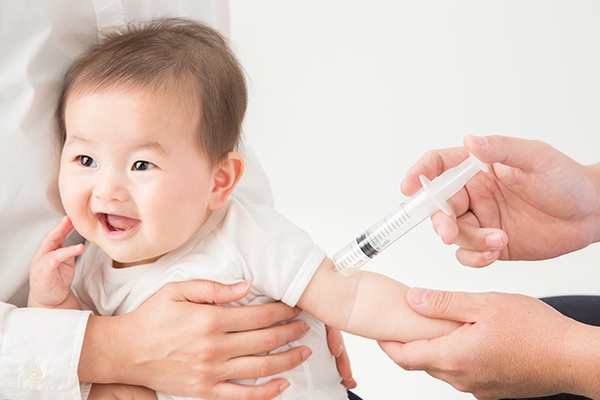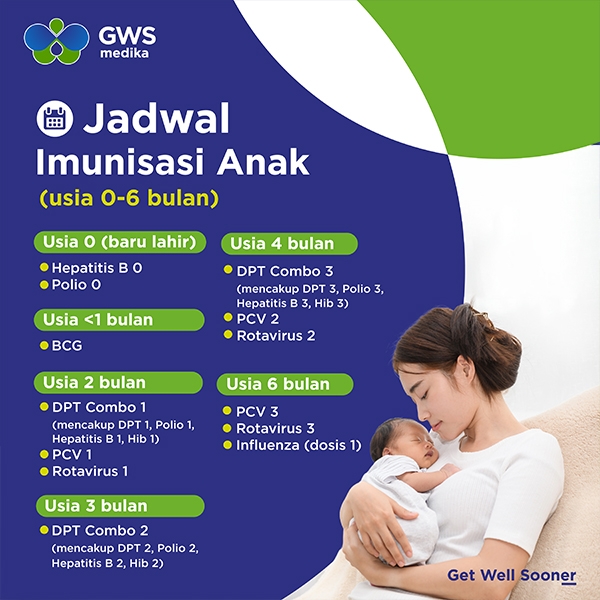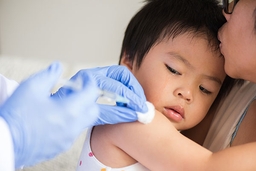Don't Miss Out: Complete Your Child's Basic Immunization

More than 1.8 million children in Indonesia have not received complete basic immunization. What is the danger?
Immunization is one of the most effective ways to protect children against dangerous diseases. Providing complete basic immunization from birth is important to maintaining their health and body resilience.
Why is immunization important?

- Protect children from dangerous diseases.
Immunization helps the body develop immunity against infectious diseases, such as measles, diphtheria, tetanus, polio, and tuberculosis. - Improving the health of families and communities
When children are immunized, they are not only protected against disease, but they also assist in protecting everyone around them, including family and community members. This increases herd immunity, which reduces the risk of spreading disease. - Supports growth and development
Immunization allows children to grow, develop optimally, and reach their potential.
Indonesia’s immunization program
The Indonesian government is committed to ensuring that all children receive complete immunizations. They have implemented a structured and comprehensive national immunization program, covering children from 0 to 18 years old.
Complete basic immunization consists of several types of vaccines, such as polio, BCG, DPT, and others. This immunization must be given according to the schedule determined by the Ministry of Health and IDAI (Ikatan Dokter Anak Indonesia).
Vaccination schedule



Various vaccines
1. Hepatitis B
The hepatitis B vaccine is given to infants to prevent the development of chronic liver disease and liver cancer. Monovalent hepatitis B (HB) immunization is administered to newborns with LBW >2000 grams immediately after birth. The American Academy of Pediatrics (AAP) recommends administering the HB vaccine to premature babies or those with birth weights less than 2000 grams at one month of age or upon hospital discharge.
2. Bacillus Calmette-Guerin (BCG)
The BCG vaccine is given immediately after birth or within the first month. If the tuberculin test is negative, BCG is given to children aged 3 months and up.
3. Polio
Poliomyelitis mainly affects children under the age of five. In some cases, it invades the nervous system, leads to irreversible paralysis.
4. Diphtheria, Tetanus, and Pertussis (DTP)
The DTP vaccine can protect children from diphtheria, tetanus, and pertussis also preventing complications from these diseases. This vaccine is administered before the child turns one year old.
5. Haemophilus influenzae b (Hib)
Hib vaccine can prevent Haemophilus influenzae type b (Hib) disease.
The Hib vaccines are administered in combination according to the pentavalent, hexavalent, DTwP, or DTaP vaccine schedule. This vaccine is given at the ages of 2, 4, 6 months, or 2, 3, 4 months, and 18 months.
6. Pneumococcal Conjugate Vaccine (PCV)
PCV vaccination is a type of vaccine to prevent pneumococcal bacterial infections that cause pneumonia and meningitis. This vaccine works by stimulating the body's immune system to develop antibodies capable of against pneumococcal bacterial infections.
7. Rotavirus
Rotavirus causes diarrhea and vomiting in babies and young children. The age limit for the rotavirus vaccine is based on consideration of the prevalence of intussusception increases with increasing age.
8. Influenza
Influenza is the most common cause of acute upper respiratory tract infections worldwide.
9. Measles-Rubella (MR) and Measles-Rubella Mump (MMR)
The MR vaccine is first administered for babies at the age of 9 months; the second dose can be given when 15–18 months old; and the third dose is given when 5-7 years old.
10. Varicella
Varicella, or chicken pox, is caused by the varicella-zoster virus. Varicella is a widespread and highly contagious disease that affects almost all vulnerable children before adolescence.
11. Hepatitis A
Early symptoms of hepatitis A during the prodromal period include mild fever, nausea, vomiting, decreased appetite, and abdominal pain.
12. Typhoid
Typhoid fever is more likely to occur in populations that lack access to clean water and adequate sanitation, and children are at the highest risk. The typhoid vaccine is a polysaccharide vaccine and is less immunogenic when administered to children under two years old.
Repeat one dose every three years.
13. Japanese Encephalitis (JE)
The vaccine is administered subcutaneously to children aged 9 months and above who live in endemic areas with MR immunization, will travel to endemic areas for one month or more, or in areas with JE outbreaks. A booster dosage might be administered 1-2 years later to ensure long-term protection.
In general, vaccine side effects are mild, consisting of a rash, a mild fever, and pain in the injection area. Severe side effects such as shortness of breath, thrombocytopenia, hypotonic hyporesponsive episodes (HHE), and systemic reactions like anaphylaxis are uncommon. However, health workers and parents must pay attention to post-immunization adverse events (AEFI) following vaccination.
Complete immunization can save children's lives and lead to a healthier future. Make sure your child gets a complete immunization as scheduled.
In some cases, the immunization schedule may differ from general recommendations, such as delayed routine immunization, traveling to endemic areas, high-risk groups, patients with immunocompromise and immunodeficiency, patients with a history of severe allergies, and other clinical conditions. Therefore, if you have any particular problems, you should talk with a doctor about your vaccine schedule.
Visit the nearest GWS Medika Clinic to get a complete basic immunization for your little one. You can also click WhatsApp to get consultation services or schedule immunizations. Prepare for their future by protecting them from an early age.



